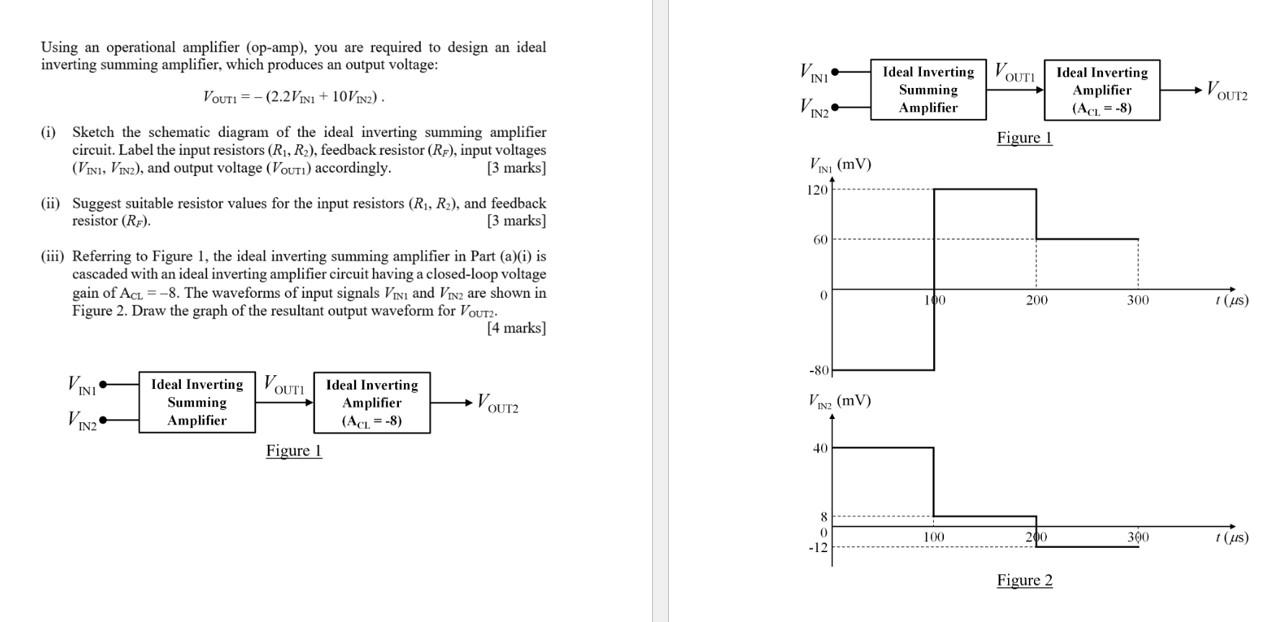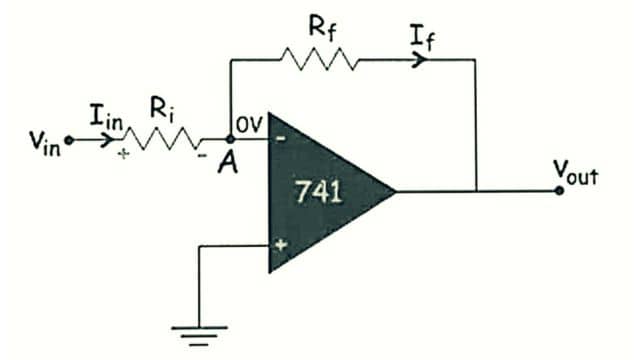Solved Using an operational amplifier opamp you are Circuit Diagram In a linear op amp, the output signal is the amplification factor, known as the amplifier's gain multiplied by the value of the input signal. A simple comparator can be created using an op amp Programmable gain signal amplification via the internal feedback resistor network. • Differential Amplifier using two op amps: Differential input voltage amplification with a rejection of the common-mode voltage. • Instrumentation Amplifier using three op amps: Differential signal amplification with high input and low output impedance.

Figure 7 shows a voltage to current converter using an op-amp and a transistor. The op-amp forces its positive and negative inputs to be equal; hence, the voltage at the negative input of the op-amp is equal to Vin. The current through the load resistor, RL, the transistor and R is consequently equal to Vin/R. We put a transistor at the output inputs the same. That is, the op amp tries to make v− + =v v + −. The second approximation is that the inputs of the op amp draw no current. Using Kirchoff's current law and the assumption that no current flows into the op amp gives: R2 v v R1 − −v v in = out − −. Recognizing that (from the first assumption above) gives the gain The use of Op-amps as a comparator can be seen in the Audio Level Meter to measure the maximum possible values of audio signals. By designing an operational amplifier with the desired gain, we can detect the level at which the peak of the signal has been reached. This is how op-amps are used as peak detectors. Advantages of Op Amp
Operational Amplifier AC Amplifier : 6 Steps Circuit Diagram
Equivalent Circuit of an Ideal Operational Amplifier. Op-amp Parameter and Idealised Characteristic. Open Loop Gain, (Avo) Infinite - The main function of an operational amplifier is to amplify the input signal and the more open loop gain it has the better. Open-loop gain is the gain of the op-amp without positive or negative feedback and for

Q point is basically a DC value (on DC load line) over which the ac signal is superimposed for the faithful amplification. This value Q point is generally a mid-value to get the maximum signal efficiency. Here we can set the Q-point in case of audio amplifier to adjust the signal to power efficiency ratio. Mixers use op-amps to combine multiple audio signals, while equalizers employ op-amps to adjust the frequency response of an audio signal. Filters, built using op-amps, are used to remove unwanted noise or frequencies from audio signals, ensuring clear and high-quality sound reproduction. Examples of op-amps in audio circuits:
